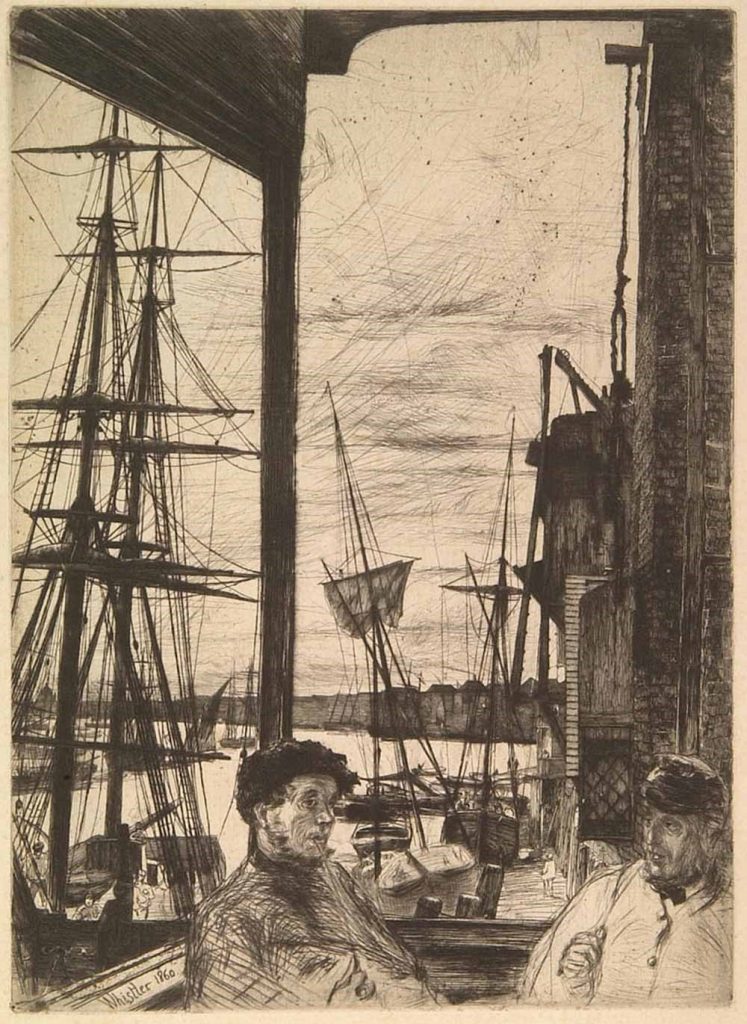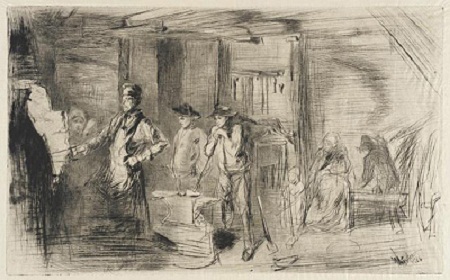The Nelson-Atkins Museum of Art Kansas City, MO
December 1 2017 - May 29 2018
“In an exhibition of etchings, the etchings are the last things people come to see,” joked James Abbott McNeill Whistler (1834-1903), America’s premier etcher.
In truth, the etchings that Whistler himself created were incredibly popular. They awed the public, critics and fellow artists alike. Whistler’s talents earned him a reputation for being among the most influential and internationally respected modern etchers. The prowess and technical innovations he brought to the medium sparked a renewed interest in this centuries-old printmaking method.
Although Whistler’s etchings exist in multiples, each impression he created was a unique work of art. This helped etching achieve recognition as an artist’s medium, elevating it beyond commercial craft. Following Whistler’s lead, other American artists experimented with etching as a serious art form. Joseph Pennell, Whistler’s biographer and an acclaimed etcher, summarized the power and essence of the medium: “A great etching by a great etcher is a great work of art . . . on a small piece of paper, expressed with the fewest vital indispensable lines of the most personal character.”
This installation of American etchings celebrates Whistler’s achievements. It also showcases the wide-ranging possibilities of etching during the American Etching Revival of the late-19th and early-20th centuries and beyond.


James Abbott McNeill Whistler (American, 1834-1903). Rotherhithe, 1860. Etching, Overall: 10 13/16 x 7 3/4 inches. Purchase: William Rockhill Nelson Trust, 33-290.
Doug Osa:
My etching, "11th and Mulberry", will be included in the upcoming show Fine Lines: Whistler and the American Etching Revival on view at the Nelson-Atkins Museum of Art, Kansas City, MO:

Also See
James McNeill Whistler,The Japanese Dress, 1890s, pencil, black chalk and pastel on brown paper, mounted on board, Bequest of George W. Davison (B.A. Wesleyan 1892), 1952.D1.10;
J. Alden Weir (1852-1919), The Haystacks, etching and drypoint, some pen and blue ink, working proof, Gift of George W. Davison (B.A. Wesleyan 1892), 1947.D1.249;

